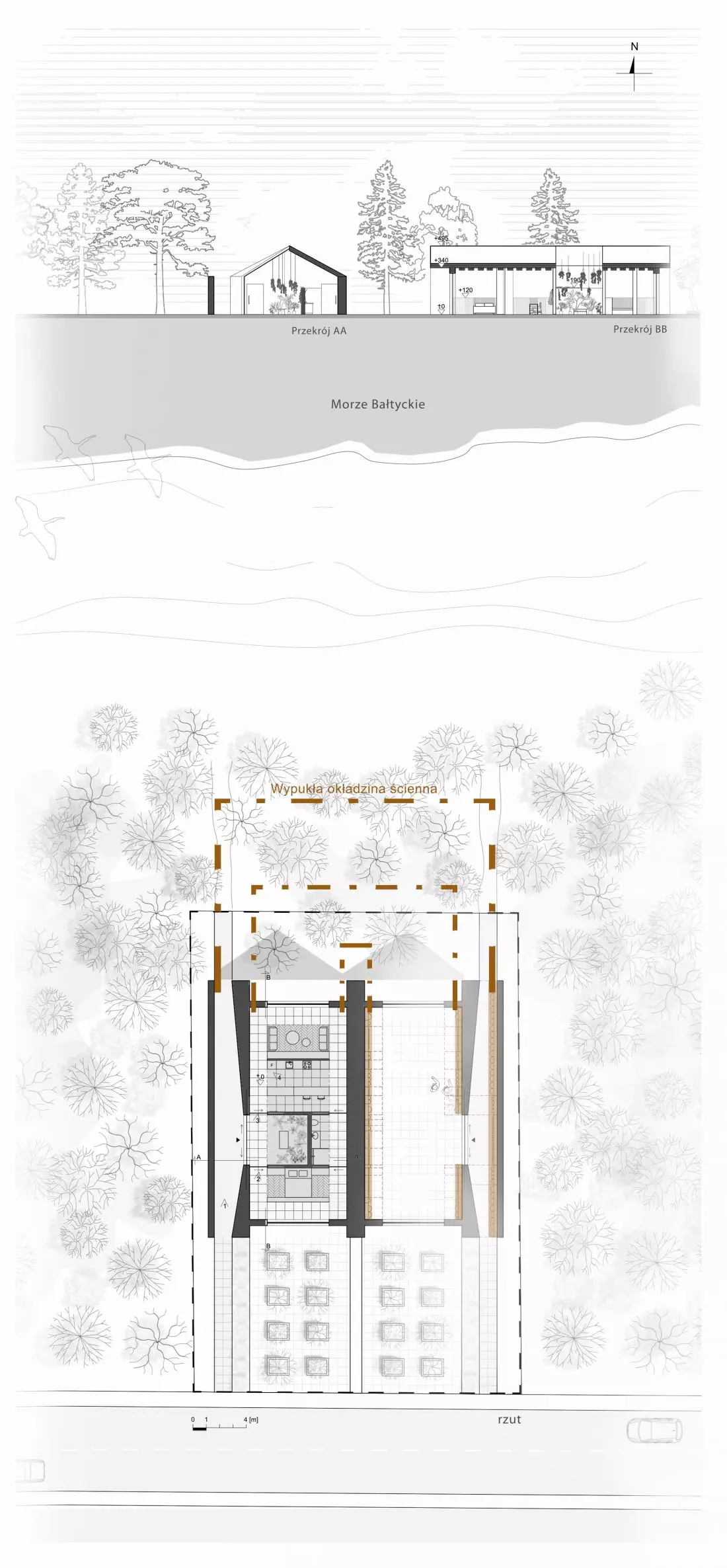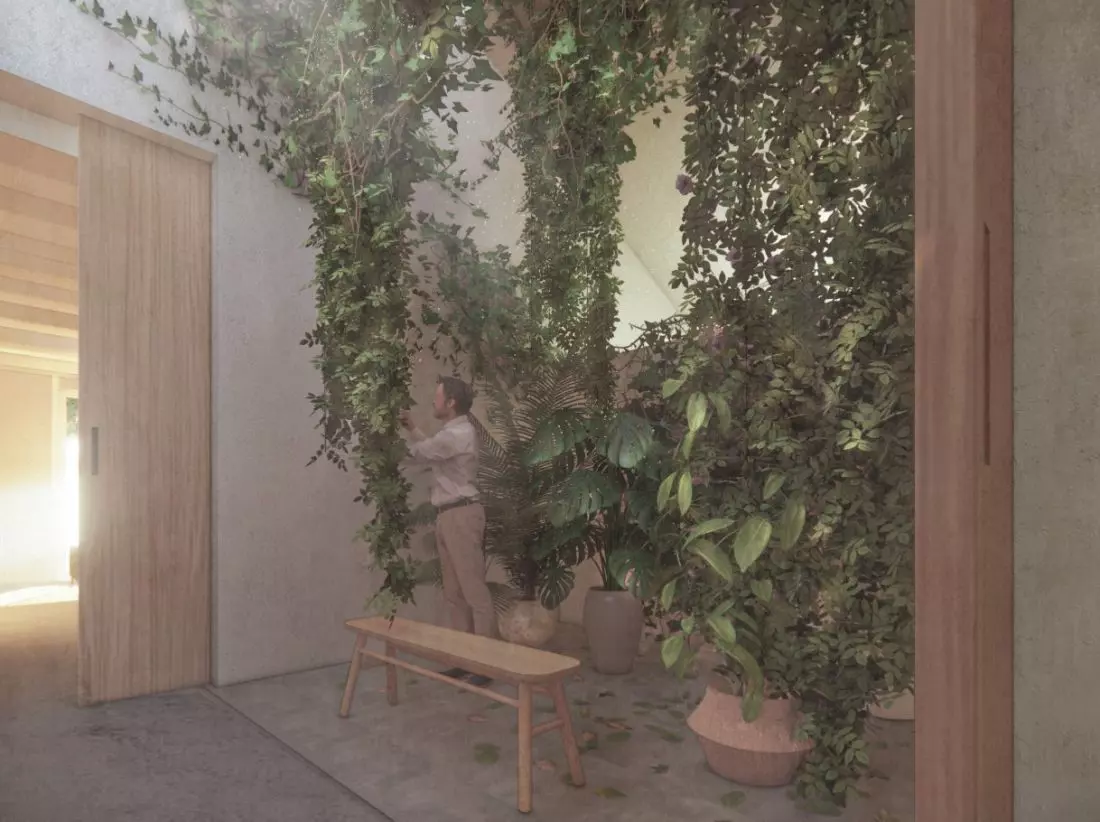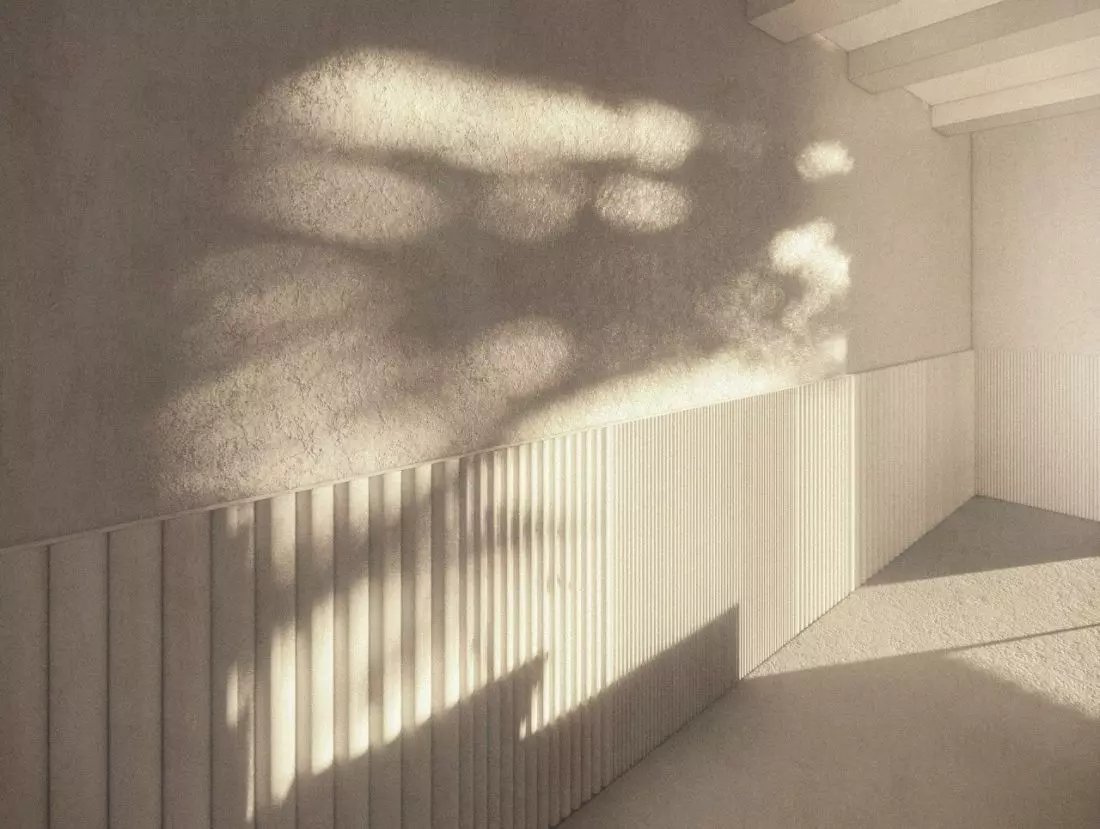How can architecture help the blind? How can design affect mobility and a sense of security? Artemis Athanasiadi, Oliwia Karapuda and Aleksandra Maszczyk, students at the Academy of Fine Arts in Gdansk, tried to answer these questions. Their project titled Because Every Step Counts received second prize in the international Home for the Blind competition organized by Bee Breeders!
The Home for the Blind competition was part of a series of competitions by the Bee Breeders platform dedicated to accessible architecture for all. The organizers were looking for designs for a semi-detached house for a blind person living alone. The house was to include basic amenities such as a kitchen, bedroom, bathroom, living room and a small backyard.
The questions before the participants were: How can architecture help people feel safe, comfortable and independent? And how can design influence the way people move around their homes? The project could be created in any location chosen by the contestants, related to their country of origin.
Students of the Academy of Fine Arts in Gdansk received second prize for their house design
© Artemis Athanasiadi, Oliwia Karapuda, Aleksandra Maszczyk
second prize for students of the Academy of Fine Arts in Gdansk
The works submitted from all over the world were judged by a jury consisting of: Jos Boys (The DisOrdinary Architecture Project), Maya Mahgoub-Desai (OCAD University, urban planner at Moriyama Teshima Architects), Chris Downey (Architecture for the Blind), Rosa Lorenzo Downey (Architecture for the Blind), Alan Dunlop (Alan Dunlop Architects), Rion Philbin (creative director of No So Studio). The jury decided to award three Grand Prizes and six Honorable Mentions. The first prize went to The Guiding Wall project by a team from the United States consisting of: Claire Hicks, Joshua Tan, Christina Zhang.
Thesecond prize for the project Because Every Step Counts went to students of the Academy of Fine Arts in Gdansk - Artemis Athanasiadi, Oliwia Karapuda and Aleksandra Maszczyk. The work was carried out under the direction of Dr. Anna Wejkowska-Lipska in the 2nd Studio of Fundamentals of Interior Design.
The project was awarded for, among other things, its simple architecture, which is easy to navigate
© Artemis Athanasiadi, Oliwia Karapuda, Aleksandra Maszczyk
As the jury opinion reads:
The Because Every Step Counts proposal is an extremely successful, simple home design that is easy to navigate, orient yourself in and remember its layout. In addition, the organization of the house is built around three distinct living spaces that are sensory-rich. Each part of the house opens onto a wooded landscape and a centrally located winter sensory garden [...]. The well-thought-out plan and the sensory richness of the house, distinguish this design done with respect for the needs of the blind.
Thethird prize and at the same time the BB Student Award was given to the Barn Home concept by a Swiss team consisting of: Lucie Perretten and Arthur Stepczynski. Another project from Poland, BASIC RULES Project, by Kateryna Kulish, was also among the awarded projects.
The house was designed surrounded by nature on Sobieszewo Island
© Artemis Athanasiadi, Oliwia Karapuda, Aleksandra Maszczyk
house on the Sobieszewska Island
The award-winning Because Every Step Counts concept was designed by the authors on Sobieszewo Island, a seaside district of Gdansk.
They chose this location to give residents the opportunity to commune with nature, thanks to its proximity to the forest and the Baltic Sea.
In front of the house, we designed a mathematical garden that fits into the grid premise. It is based on enabling a blind person to count his steps, so he can find his way around more easily and use the space in front of his house without difficulty, the ASP students say.
Along the side of the house, the designers have placed a separate wall that leads the blind person to the entrance. In addition, the wall of the house becomes more and more concave up to where the door is, which also helps with orientation.
The wall leads the blind man to the entrance
© Artemis Athanasiadi, Oliwia Karapuda, Aleksandra Maszczyk
walking and counting
Because Every Step Counts was designed to guide the occupant through the house using walls that start and end at the same place. The entire design is based on a mathematical grid that helps a blind person navigate through the building and garden.
Themodule is a square with a side equal to 60 cm, which is the average length of a human step. A blind person can count his steps and, at the same time, modules to orient himself in space, the authors explain.
winter garden
© Artemis Athanasiadi, Oliwia Karapuda, Aleksandra Maszczyk
therapy with the sense of smell
The entrance to the building is located in the winter garden. Upon crossing its threshold, the resident can smell the intense aroma of plants and herbs. The wall and roof of this room are made of smart glass so that the intensity of light can be controlled. The garden is the link between the "public" and "private" zones.
The corridor and convex cladding make it easier to move around the interior of the house
© Artemis Athanasiadi, Oliwia Karapuda, Aleksandra Maszczyk
narrow space, wide space
Another idea of the Polish women was to create an interior corridor placed against the outer walls of the house, where there will be no furniture or obstacles. The designed corridor is wide by the two modules mentioned earlier and is 120 cm wide. It leads the resident to all parts of the house. A person can recognize the zone he is in by the narrowness of the wall.
The convex stone lining of the walls makes it easier to orient oneself
© Artemis Athanasiadi, Oliwia Karapuda, Aleksandra Maszczyk
Wall lining like a signpost
Artemis, Oliwia and Aleksandra were looking for a simple way for the resident to be guided around their own home. The solution turned out to be a stone wall covering that facilitates understanding of the space through the sense of touch.
It is a way that incorporates a lot of information into the smallest amount of space possible. It consists of three elements of different widths. The widest one is the basic element. An element half as narrow signals an approaching obstacle, and the elements arranged closest to each other inform that the obstacle is on the other side of the corridor, the designers explain.
Read also about INvisible house - a house project for the visually impaired. Its author, Patryk Wlodarczyk, a student at the Cracow University of Technology, won second prize in the Homefutura competition organized by UNI competitions.





































